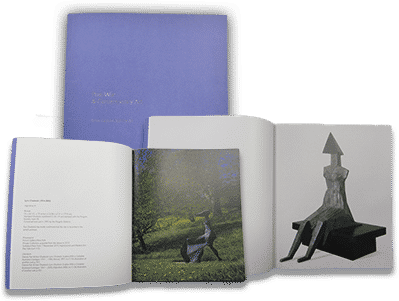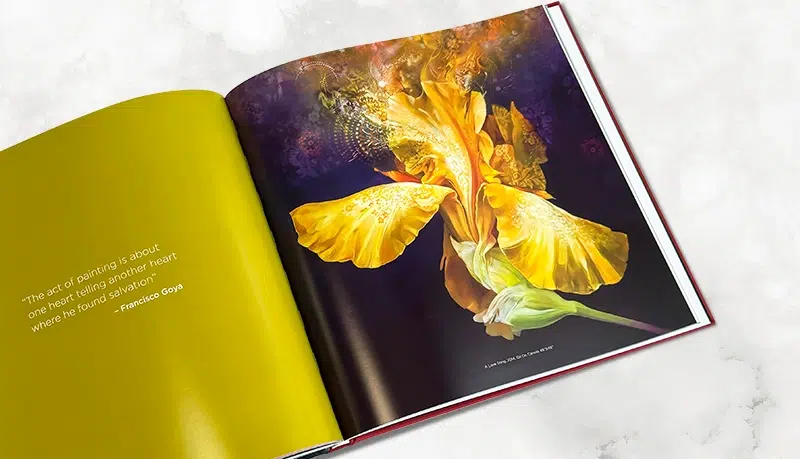How DPI Affects the Final Quality of Your art book
How DPI Affects the Final Quality of Your art book
Blog Article
Comprehending the Process Behind High-grade Art Book Printing for Art Lovers
When it comes to top notch art book printing, understanding the complexities of the procedure can elevate your gratitude for the last product. As you check out the numerous components of art book printing, you'll reveal understandings that might change your perspective on art conservation and discussion.
The Importance of Paper Choice in Art Book Printing
When it involves art book printing, the choice of paper can make or break the last product. You want your artwork to radiate, and the appropriate paper enhances color vibrancy and detail. Think about variables like weight, texture, and finish; these aspects significantly influence just how readers perceive your work.
For instance, a much heavier supply shares top quality and resilience, while a textured surface can add depth to pictures. Smooth paper is exceptional for thorough recreations, permitting great lines and subtle shades to appear crisp.
Do not forget the paper's brightness; a brighter sheet can help shades pop, making your art more appealing. You'll likewise wish to believe concerning exactly how the paper communicates with inks and whether it can manage the printing process without deforming or bleed-through. Ultimately, selecting the right paper establishes the phase for your art, guaranteeing it catches the audience's attention equally as you pictured.
Picking the Right Inks for Lively Reproductions
Choosing the right inks is simply as crucial as choosing quality paper to attain vivid recreations in your art book. When you're printing art work, you desire colors that pop and properly represent the original item. Choose for inks with a high pigment concentration; these often tend to create richer and much more saturated colors.
You may consider making use of archival inks, which stand up to fading in time, guaranteeing your art book continues to be as striking as the day it was printed. If you're collaborating with pictures or electronically developed art, pigment-based inks can supply a bigger shade gamut, enhancing information and deepness.
Don't ignore the finish! Matte and glossy inks can drastically modify the appearance of your art work, so think of the appearance you're aiming to accomplish - art book. Inevitably, the best ink selection complements your paper choice, developing a spectacular aesthetic experience for your viewers
The Role of Color Monitoring in Publish Quality
Color administration plays an essential function in accomplishing high print top quality for your art book. It guarantees that the colors you see on your display convert accurately to the published web page. Without effective shade monitoring, your vibrant art work might show up dull or distorted, threatening your imaginative vision.
To start, calibrate your screen regularly. This step helps preserve constant shade depiction. Next, use color profiles tailored for your printer and paper type. These accounts assist the printer in reproducing colors precisely, minimizing disparities in between electronic and printed versions.
When you prepare your documents, consider using a shade room like Adobe RGB or CMYK, relying on your printer's specifications. Always proof your job, too; an examination print can disclose any kind of possible shade problems before the final run. By focusing on color monitoring, you guard the integrity of your art, ensuring your audience experiences it as you intended.

Understanding Various Binding Methods
Achieving the excellent seek your art book goes beyond shade management; binding strategies likewise play a significant function in its overall discussion and sturdiness. You have several choices to evaluate, each with its very own unique attributes.
If you're going for a specialist feel, situation binding offers a strong option with a difficult cover, excellent for showcasing your artwork. On the various other hand, perfect binding supplies a flexible spinal column while maintaining costs down, making it a preferred choice for softcover books.
Spiral binding permits your art book to lay flat, which is excellent for displaying images without blockage. Meanwhile, saddle stitching is suitable for smaller sized booklets, providing a tidy finish without the bulk.
Ultimately, the binding method you select need to reflect your artistic vision and exactly how you desire viewers to involve with your job. Make certain to weigh these choices very carefully to attain the best outcome for your project.
The Effect of Print Size and Design on Discussion
While the selection of print dimension and format might appear second to web content, they greatly influence how your artwork is viewed. The measurements of your prints can either improve or reduce the influence of your items. Bigger prints can draw customers in, enabling them to value complex information, while smaller sized styles may require more intimate engagement.

Preservation Techniques for Durable Art Books
To ensure your art publications stand the test of time, it's crucial to execute effective preservation strategies. Use acid-free storage space boxes or safety sleeves to protect them from dirt and physical damage.
When handling your publications, always wash your hands or put on cotton gloves to prevent oils and dust transferring onto the web pages. Avoid bending or wrinkling the spines; instead, make use of book supports when presenting them.
For included security, think about link buying archival-quality materials for any type of repairs or enhancements. Frequently examine your collection for indicators of wear or damage, attending to concerns promptly. By complying with these basic approaches, you can guarantee your art books stay lively and obtainable for years to come, protecting their appeal and worth for future generations.
Teaming up With Printers for Optimum Results
When you're ready to print your art book, choosing the best printer is vital to accomplishing your vision. Clear interaction regarding your assumptions and requirements will certainly help guarantee that both you and the printer are on the same page. Let's explore how to make this collaboration as smooth and reliable as feasible.
Picking the Right Printer

Reliable Communication Techniques
Reliable interaction is important for transforming your art book vision right into reality, especially when working together with printers. art book. Beginning by plainly outlining your job's objectives, consisting of layout elements, preferred materials, and any type of specific printing strategies. Don't be reluctant to share your motivations and recommendations; this aids the printer recognize your visual
Set up regular check-ins to talk about development and attend to any kind of inquiries. Usage visuals, like mock-ups or examples, to share your concepts more effectively. Be open to feedback, as printers typically have useful understandings that can improve your job. Lastly, preserve a positive connection by being respectful and appreciative of their competence. This collaboration will assure that your art book fulfills your assumptions and radiates in its final form.
Often Asked Concerns
What Are Common Blunders to Stay Clear Of in Art Book Printing?
When publishing your art book, avoid common blunders like bad resolution images, wrong color profiles, and disregarding page layout. Do not fail to remember to proofread and ascertain details to validate your last product fulfills your expectations.
How Does Digital Printing Differ From Typical Printing Techniques?
Digital printing uses electronic data to create prints straight, permitting quicker turn-around and personalization. On the other hand, standard methods include physical plates, which can be time-consuming and much less flexible for little runs or distinct layouts.
What Is the Normal Turn-around Time for Art Book Printing?
The normal turn-around time for art book printing varies, yet you can expect it to take anywhere from a couple of weeks to several months. Aspects like complexity, quantity, and printing approach all influence this timeline.
Can I Publish a Minimal Edition Art Book Financially?
You can publish a restricted version art book economically by choosing cost-efficient materials, enhancing print runs, and making use of digital printing choices. Mindful planning and budgeting will aid you achieve high quality without spending beyond your means.
What Are the Environmental Considerations in Art Book Printing?
When taking into consideration art book printing, you should think of environmentally friendly products, lasting inks, and energy-efficient processes (art book). Choosing regional printers can additionally lower your carbon footprint, making your project both lovely and eco responsible
Report this page